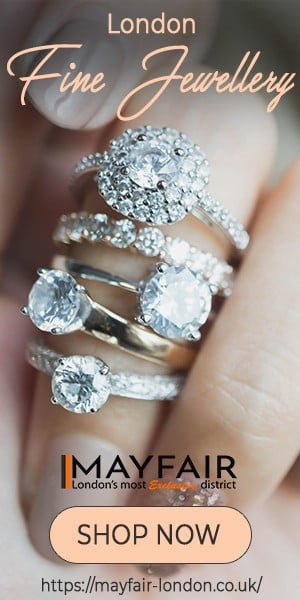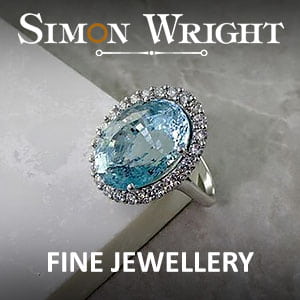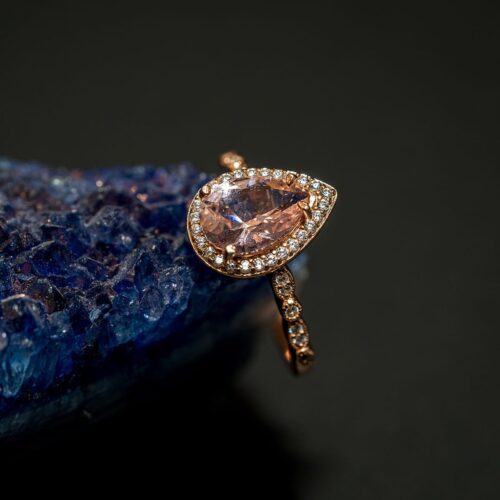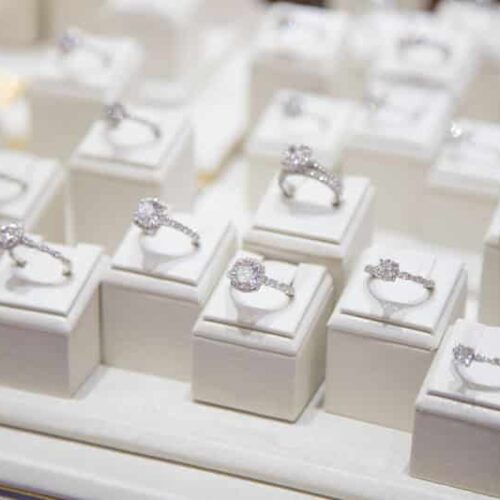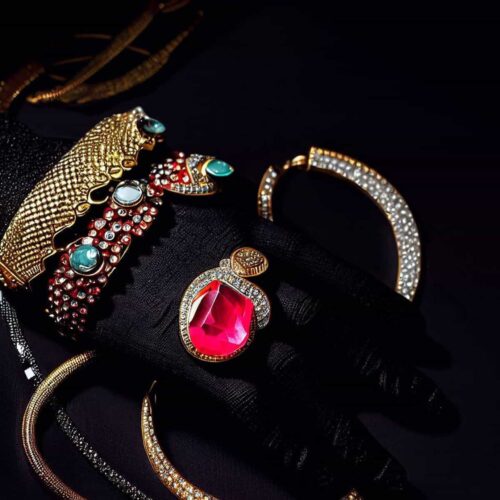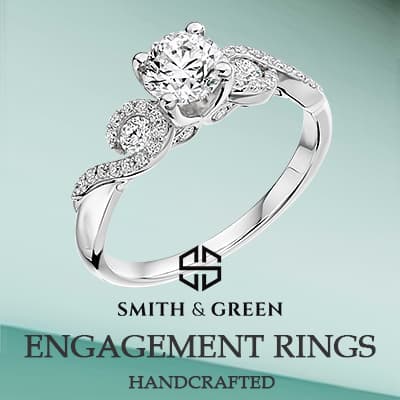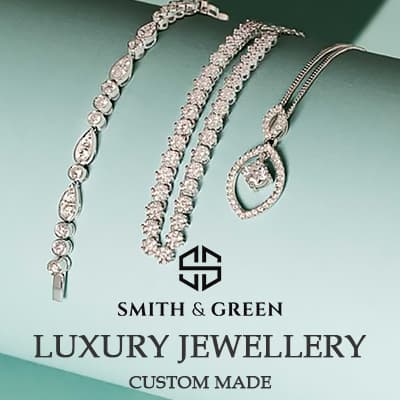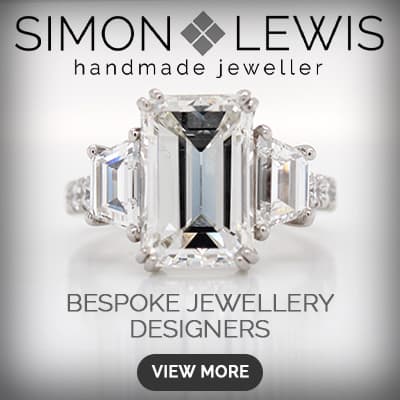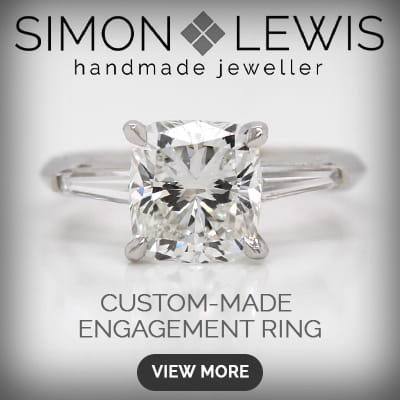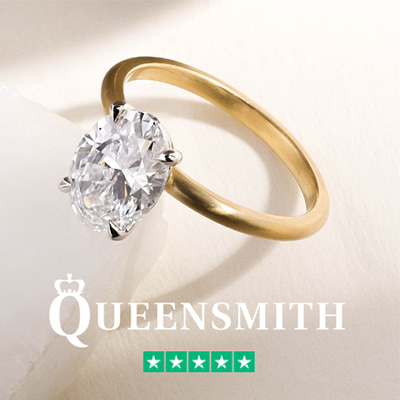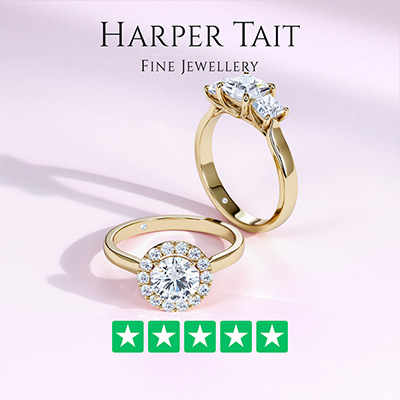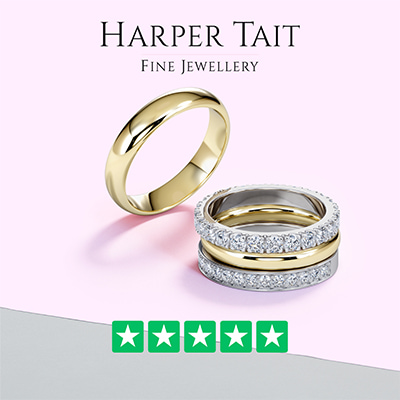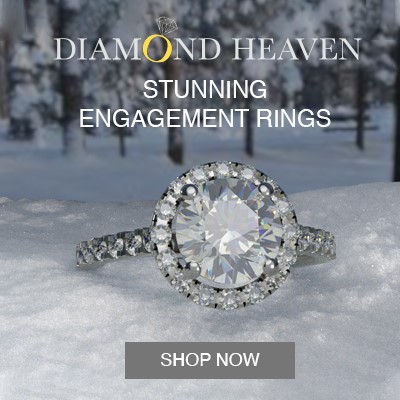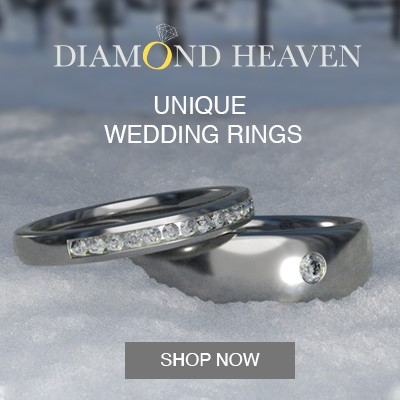For most people, choosing your diamond cut and buying a diamond ring is a new experience. Our knowledge section is designed to answer all your questions. If there’s anything else you’d like to know, Farringdon’s can help.
Asscher cut diamonds
Introduced in 1902 by renowned diamond cutter Joseph Asscher. This diamond shape utilises many of the same cutting techniques as the emerald cut. What sets Asscher diamonds apart are their uniquely angled and cropped corners creating a timeless look.
Cushion cut diamonds
First introduced to the jewellery market in the early 1800s. The cushion cut diamond is rich with diamond history, though today’s cushion cut is slightly different. Cut into a square or rectangular shape with rounded corners and sides. It’s considered by many to be a more vintage version of the round cut diamond.
Emerald cut diamonds
Emerald cut diamonds are usually rectangular in shape. Distinguished by bevelled corners and step facets. This type of diamond is more transparent than other shapes, often requiring higher standards of clarity.
Heart cut diamonds
Living up to its name, the heart cut diamond has become synonymous with love and affection. Making it an excellent choice for an anniversary or engagement ring. One of the most demanding diamond cuts to create, a heart-shaped stone requires great skill and dexterity from the diamond cutter.
Marquise cut diamonds
The marquise cut is rumoured to have been specially developed for King Louis XIV of France. He wanted a diamond that simulated the smile of Marquise de Pompadour. The elongated marquise stone has gracefully pointed ends for a dramatically beautiful appeal.
Oval cut diamonds
Cut with the same number of facets as a round diamond, an oval shape emits nearly the same level of diamond brilliance and fire. Due to its elongated shape, the oval cut can appear larger than a round diamond of equal carat (weight).
Pear cut diamonds
Exuding elegance, the pear shape diamond also referred to as a drop cut or teardrop diamond. It is cut to resemble a drop of water with a single point and rounded end. The result is a cross between a round and marquise cut.
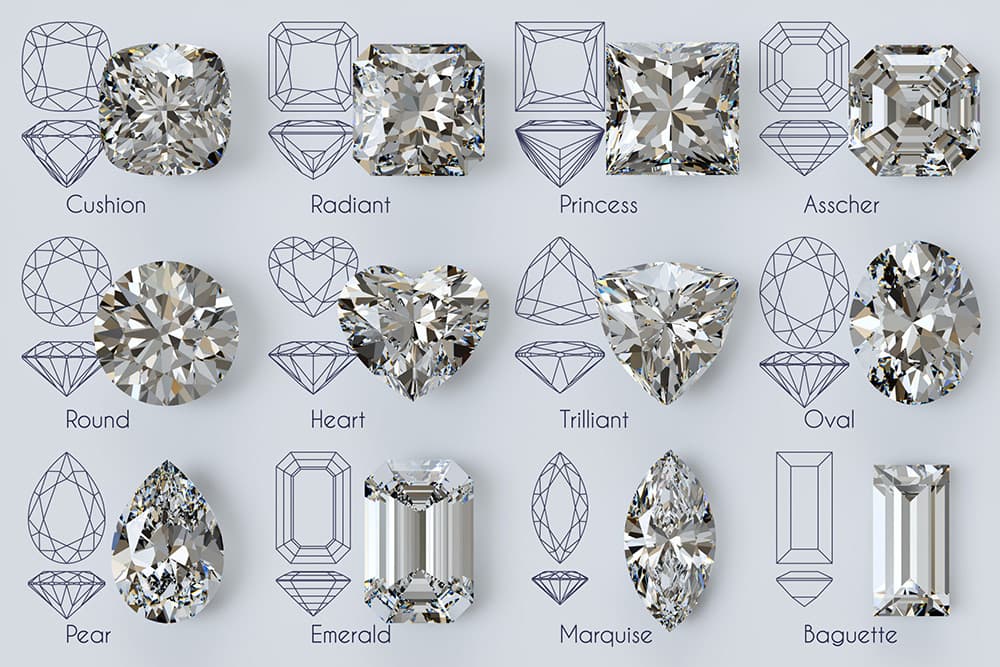
Radiant Cut
Relatively new to the jewellery industry, radiant diamonds were introduced a little more than 20 years ago. This unique shape is a stunning hybrid of a traditional round cut and an elegant emerald cut resulting in a square, near-square, or rectangular orientation. As the name suggests, radiant diamonds tend to emit a beautiful, memorable glow.
Round brilliant-cut diamonds
The Round Brilliant came to the forefront of diamond cutting around 1919. The round cut has since grown in popularity to become the most used cut globally. It has gained such popularity due to the wonderful fire and brilliance it has from the circular girdle and the number of facets, 58. The diamond has been finely cut to a point, losing the culet at the bottom of the stone. This allows the stones to differ from previous round cuts.
Princess cut diamonds
A square stone with 90-degree corners, the princess shape originated in the United States in 1980. The most desirable princess diamonds are perfectly square in shape, with the more rectangular variations decreasing in value.
Step cut diamonds
Cutting style with mainly square and rectangular facets arranged in concentric rows, simulating a mirrored staircase.



